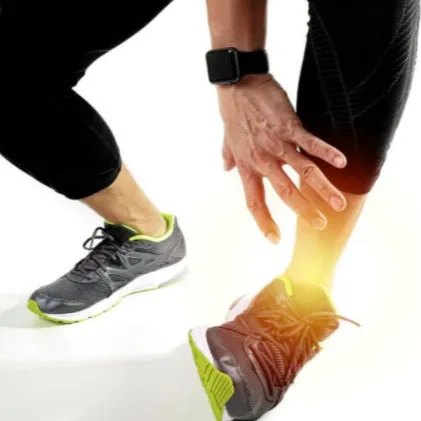Burns
0 views
Mar 19, 2025
A review of the various types of human burns and to treat each type http://www.foot-pain-explained.com/burns.html @marcbarry1000
View Video Transcript
0:00
burns are a common injury that can be
0:02
caused by a variety of different factors
0:03
such as exposure to fire hot liquids or
0:06
the sun's Rays just to name a few
0:08
depending on the severity of the burn
0:10
different treatment options may be
0:12
necessary to ensure proper healing and
0:14
reduce the risk of further complications
0:16
in this article we will discuss the
0:18
different classifications of burns their
0:21
symptoms and causes and appropriate
0:22
treatment options
0:24
burns are classified based on the depth
0:26
and severity of the tissue damage there
0:28
are four primary classifications of
0:30
burns first degree second degree third
0:33
degree and fourth degree burns let's
0:35
look at each of them in detail a first
0:37
degree burn typically only affects the
0:39
outer layer of the skin known as the
0:41
epidermis
0:42
symptoms of a first-degree burn include
0:44
redness mild swelling and pain
0:47
sunburns are minor scalds from hot
0:49
liquids are common examples of
0:51
first-degree Burns
0:52
treatment for a first degree burn
0:54
typically involves cooling the affected
0:56
area with lukewarm not cold water or
0:58
compresses and applying an
0:59
over-the-counter burn cream such as
1:01
Silvadene cream it's important to avoid
1:03
breaking any blisters that may form and
1:05
to keep the area moisturized to prevent
1:07
the skin from drying out a second-degree
1:10
burn affects both the epidermis and the
1:12
layer of skin beneath it known as the
1:13
dermis
1:14
symptoms of this type of burn include
1:16
redness blistering severe pain and
1:19
swelling Burns caused by hot liquids
1:22
Flames are chemicals are common examples
1:24
of second-degree burns
1:25
treatment for a second-degree burn
1:27
typically involves applying a mildly
1:29
cool compress to the affected area to
1:31
help alleviate pain and reduce swelling
1:34
in some cases an antibiotic cream such
1:36
as Silvadene cream may be prescribed to
1:39
reduce the risk of infection it's
1:41
important to seek medical attention if
1:43
the burn covers a large area or is
1:44
located on the face hands feet genitals
1:47
or buttocks a third degree burn is a
1:50
severe injury that affects all three
1:52
layers of the skin as well as the
1:53
underlying tissue such as muscles or
1:55
bones
1:56
symptoms of a third degree burn include
1:58
leathery black or white skin severe pain
2:01
or numbness and charring of the skin
2:03
burns caused by fires chemicals or
2:06
electricity are common examples of
2:08
third-degree Burns
2:09
treatment for a third degree burn
2:11
typically involves seeking immediate
2:13
medical attention the burn area will
2:15
need to be cleaned and debrited which is
2:17
the removal of dead tissue to reduce the
2:19
risk of infection
2:21
skin grafts may be necessary to promote
2:23
healing and to reduce scarring a fourth
2:25
degree burn is the most severe
2:27
classification of burn this type of burn
2:29
affects all three layers of the skin as
2:32
well as the underlying tissue and often
2:34
results in permanent damage
2:35
symptoms of a fourth degree burn include
2:37
black or charred skin severe pain or
2:40
numbness and damage to bones or internal
2:42
organs
2:43
high voltage electrical burns are
2:45
prolonged exposure to extreme heat are
2:47
common causes of fourth degree burns
2:49
treatment for a fourth degree burn is
2:51
similar to that of a third degree burn
2:53
but the damage may be more extensive
2:55
requiring amputation or other surgical
2:57
procedures if you suffer a burn it's
3:00
important to take immediate action to
3:01
help reduce the severity of the injury
3:03
and prevent further damage
3:05
here are some helpful tips for caring
3:07
for burns one remove any clothing or
3:10
jewelry that is in contact with the
3:11
affected area
3:12
2. rinse the burn area with cool not
3:15
cold running water for at least 10
3:17
minutes avoid using ice as this can
3:19
further damage the skin 3. cover the
3:22
burn area with a sterile bandage to
3:24
reduce the risk of infection
3:25
4. apply an over-the-counter burn cream
3:28
or ointment to the affected area the
3:31
gold standard is Silvadene cream five
3:33
taken over-the-counter pain reliever to
3:35
alleviate pain and reduce swelling 6.
3:38
seek medical attention if the burn
3:40
covers a large area or is located on
3:42
sensitive parts of the body such as the
3:44
face or genitals in conclusion Burns can
3:47
range in severity from first degree to
3:49
fourth degree burns with each
3:51
classification requiring different
3:52
treatment options it's essential to seek
3:55
immediate medical attention if you
3:56
suffer a severe burn to promote proper
3:58
healing and prevent further damage
4:01
when caring for burns it's essential to
4:03
take immediate action and follow proper
4:05
treatment protocols to reduce the risk
4:07
of infection and help promote faster
4:08
healing
#Injury
#Skin Conditions

